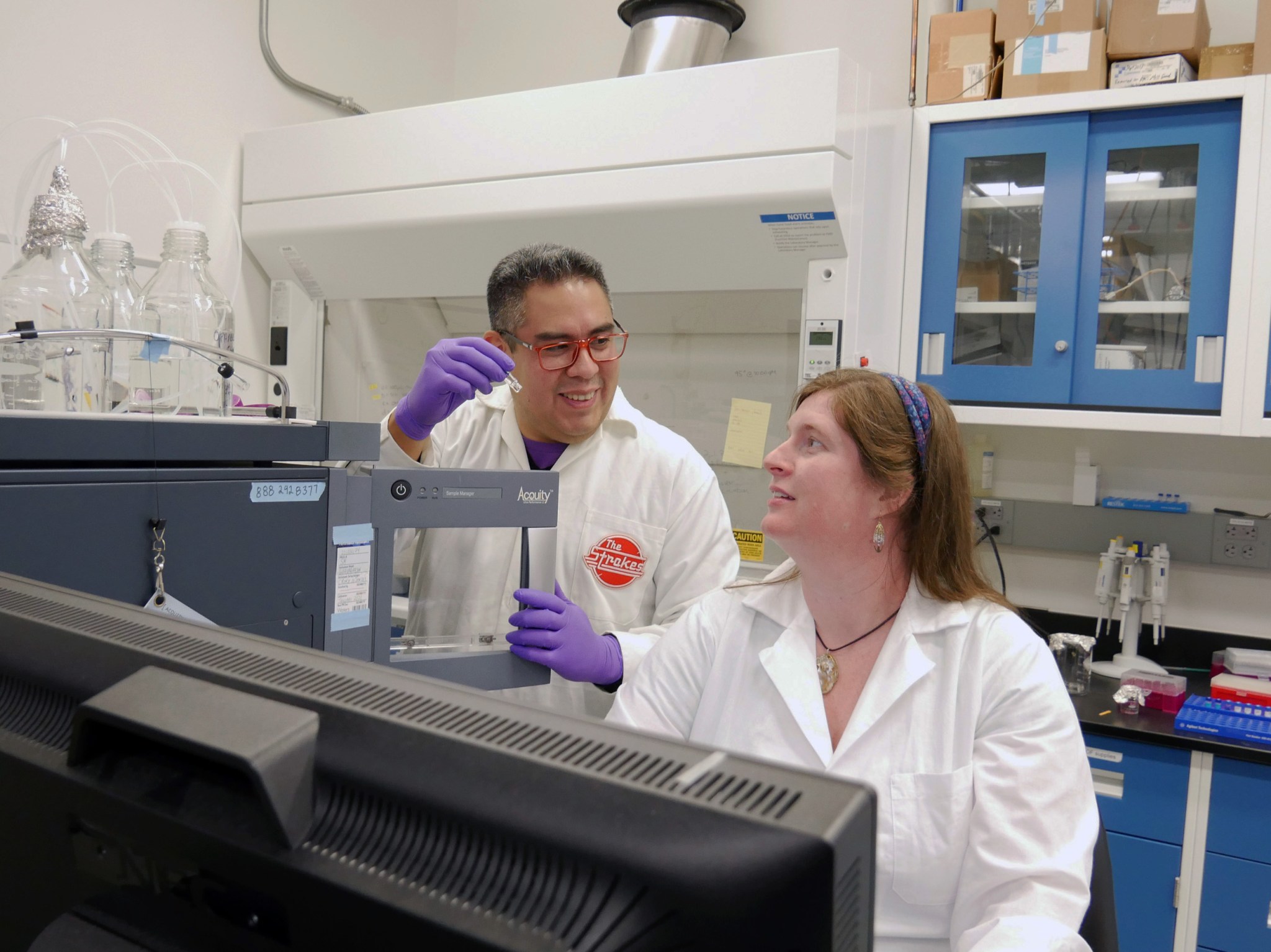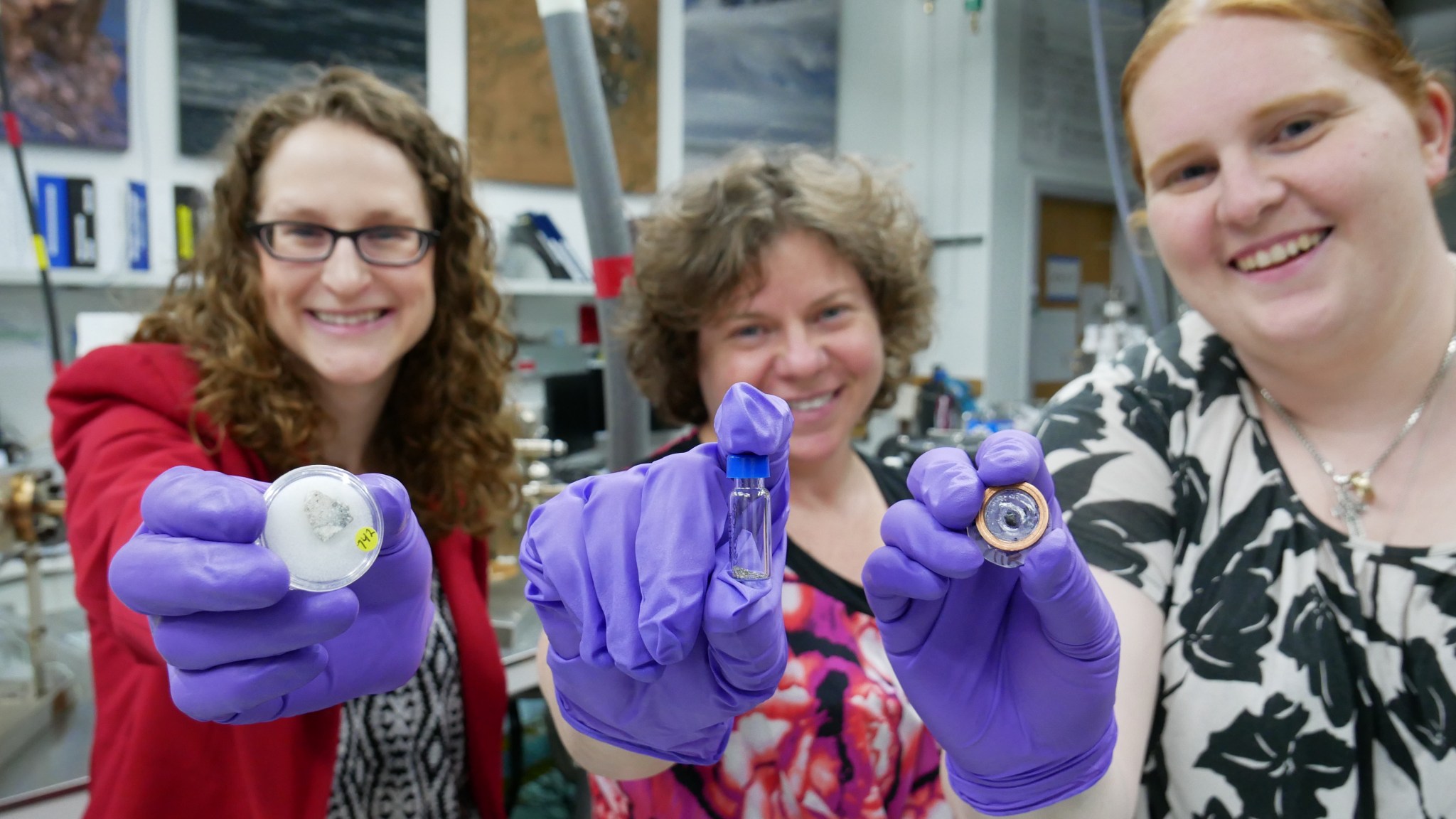New Generations, Equipped with New Technologies, Prepare to Analyze 50-Year-Old Samples in the New Year
Credits: NASA’s Goddard Space Flight Center
Download this video in HD formats from NASA Goddard’s Scientific Visualization Studio
Fortunately for today’s scientists, Apollo-era leaders had the foresight to save much of the 842 pounds (382 kilograms) of Moon soil and rocks retrieved by NASA astronauts 50 years ago for future generations. They figured new crops of scientists, using instruments of their time, would be able to probe the samples with unprecedented rigor.
Now, the future that Apollo-era scientists envisioned has come. Their successors, many of whom weren’t even born when the last astronauts scooped up the Moon samples they’ll now be probing in their labs, are ready to take a giant leap towards answering long-standing questions about the evolution of our solar system.
Two teams based at NASA’s Goddard Space Flight Center in Greenbelt, Maryland, are among the nine science groups selected to study Moon samples that has been sealed for half a century. Using cutting-edge machines that can detect the chemical composition in grains of soil as small as a speck of dust, the two Goddard labs will study how the building blocks of life evolved in our solar system and how the Moon’s surface chemistry was shaped over eons by radiation from space and from the Sun.
“We are using instruments that did not exist during early analyses of Moon samples,” said Jamie Elsila, an astrochemist in the Astrobiology Analytical Laboratory at NASA Goddard. She leads a team that will study samples of regolith, or Moon soil, collected in 1972 near the Apollo 17 landing site of Taurus-Littrow Valley on the eastern rim of Mare Serenitatis.
“Because our tools today are more sensitive,” Elsila said, “we can analyze things that are present in tiny amounts. We also now can separate chemical compounds from a mixture, making it easier to identify them.”

Elsila’s lab analyzes amino acids in Apollo samples, meteorites, and comet dust — in other words, in well-preserved remnants of the early solar system. Amino acids are simple organic compounds that have been around for billions of years and are critical to the functioning of life as we know it. With the new Apollo 17 samples, Elsila and her team will look for the molecules, such as formaldehyde or hydrogen cyanide, that form amino acids to shed light on the primordial chemistry of the solar system. “For us, this is a snapshot into what the world was like back then,” says Elsila.
The Moon’s surface is much better preserved than Earth’s since it has no wind, storms and other geologic processes that can erode its surface. As a result, studying the amount and types of these life-yielding molecules in pristine Moon soil could help scientists recover some of the lost history of the evolution of Earth. They also can help shed light on the early geologic processes that shaped this planet.
“We don’t have any rocks on Earth that are older than about 4 billion years old, so we don’t know exactly how much volcanic activity there was or how heavily Earth was bombarded by asteroids” said Barbara Cohen, a planetary scientist who heads Goddard’s Mid-Atlantic Noble Gas Research Laboratory, or MNGRL, the second Goddard lab selected to study new Apollo samples. “Since the Earth and the Moon formed together, we can use our findings from the Moon to infer what happened on the early Earth.”
With this in mind, the two Goddard labs will be the first to study Apollo samples that were frozen soon after landing back on Earth 50 years ago and untouched since. Goddard scientists also will get to probe below the Moon’s surface by analyzing grains from another set of samples that Apollo 17 astronauts collected by driving tubes down to 10.6 inches (27 centimeters) below the surface and pulling out soil that they vacuum-sealed inside the tube right on the Moon. That tube also has never been opened.
These unique storage conditions, the research teams suspect, may have preserved delicate organic compounds that could have been altered in most other Moon samples that were stored at room temperature.
In fact, another science objective of both Goddard sample teams is to determine what kind of storage systems are the most effective in keeping samples uncontaminated for long periods of time. This type of research is crucial to scientists studying the prebiotic seeds of life. The information Goddard scientists will glean will inform not only the proper storage of samples to be collected during NASA’s Artemis mission to the Moon, but also during the Mars 2020 sample-collection mission to the Red Planet, and the OSIRIS-REx mission to the asteroid Bennu, where a spacecraft will collect 60 to 2,000 grams of dirt and rocks and then deliver them to Earth in 2023.
From Space Geek to Moon Doctor
Natalie Curran is a postdoctoral researcher in the MNGRL lab — aptly pronounced “moon girl” to reflect the lab’s mostly women staff. MNGRL scientists look at the amount and types of noble gases in lunar rock grains and meteorites to determine how long they were exposed to various types of radiation on the Moon’s surface. Noble gases, such as neon and argon, for instance, are good study subjects because they don’t react with other elements, so they stay well-preserved through time, Curran said.
“We will use our findings to paint a picture of what kind of space environment affected Taurus-Littrow Valley over hundreds of millions of years. This will provide important geologic context to scientists who analyze rocks from that site, especially our colleagues who are studying whether the buildings blocks of life formed on Earth or were delivered here from space,” Curran added.

By using instruments that separate noble gases into groups based on their type and then release the gases from soil grains MNGRL scientists will be able to tell how these gases were produced. They will try to determine whether they were implantated on the Moon’s surface by the solar wind, cosmic rays or meteorites, and how long they were exposed to these phenomena. The more noble gases they find, the more a sample was exposed to some form of these types of space weather. Curran and Cohen can even tell what type of space weather the sample was exposed to based on the isotopes, or forms, of noble gases they find.
Curran’s interest in space blossomed when she was growing up in Manchester, United Kingdom.
Her family often took her to explore the Jodrell Bank Observatory at the University of Manchester. “That’s one of my favorite places in the world,” she said.
After her uncle brought back stickers, postcards and a space-themed jigsaw puzzle from NASA’s Kennedy Space Center in Cape Canaveral, Florida, Curran became hooked on the American space agency: “I posted the NASA stickers all over my room,” she said.
Today, as a scientist at NASA, she still finds herself awed by NASA and the Moon landings, whether through watching video footage from the Apollo era or handling Moon samples.
She’s already had the opportunity to study samples stored in room temperature from the Apollo 12 and 16 missions. “Every time I work on these samples, it’s like a connection to those missions,” she said. It’s the connection that the astronauts and scientists who came before her hoped to make with their Moon-loving decedents.
By Natalie DiDomenico and Lonnie Shekhtman
NASA’s Goddard Space Flight Center, Greenbelt, Md.






















